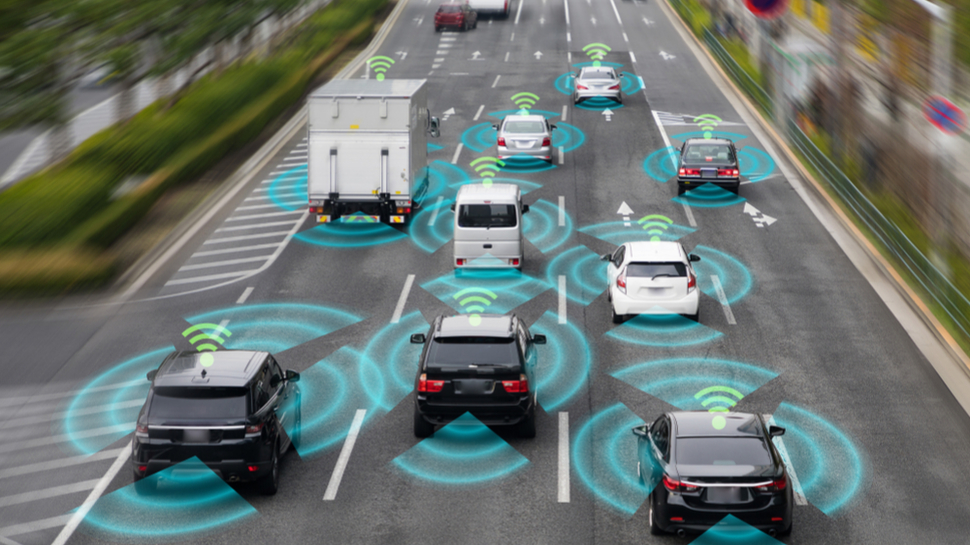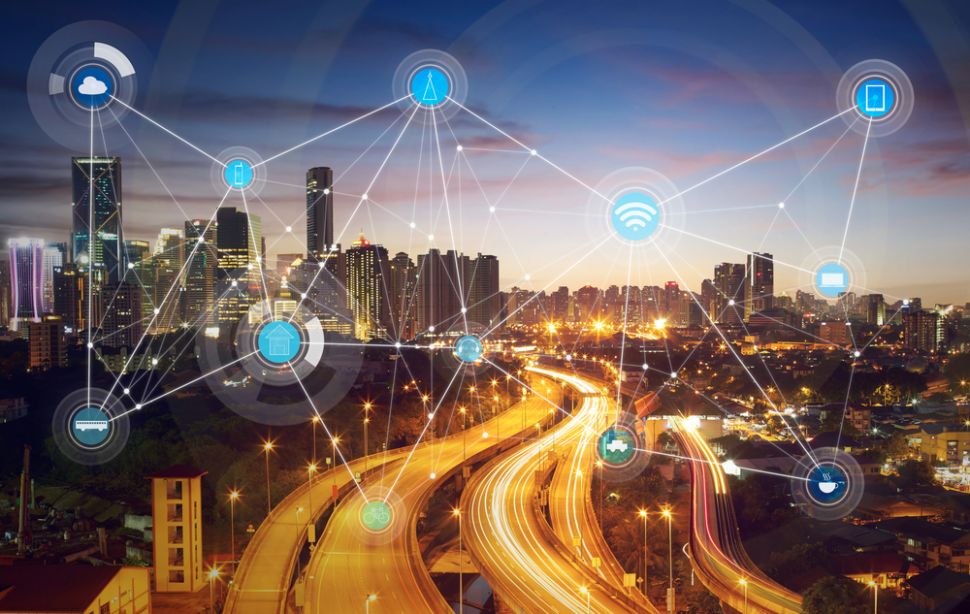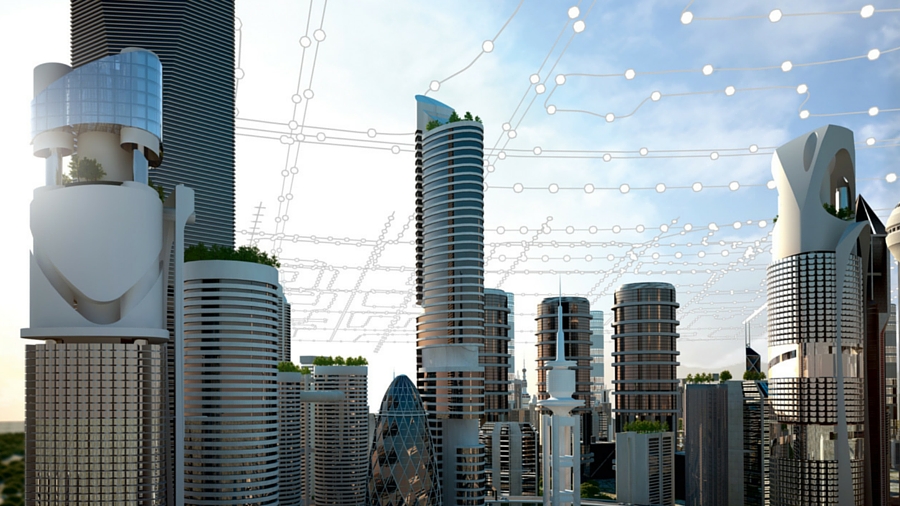5G and smart cities: everything you need to know
Smart cities are nearly here, and could change everything

After years of anticipation, 5G networks are finally here, promising to propel us into a new era of connectivity.
Offering a major step-up from 4G networks, 5G offers huge upgrades in terms of speed and latency, giving you the ability to download an HD quality film in seconds, as well as being able to enjoy live streaming and gaming, all on your smartphone.
Away from your smartphones though, 5G can also offer improved connectivity for the wider world around us. The Internet of Things (IoT), which brings together billions of connected smart objects, will get a major boost from 5G, in turn boosting the connectivity of our homes, offices and cities too.
Imagine a city that reacts to the world around it, taking information from the people within it, crunching data from sensors on roads, vehicles, buildings and much much more to improve the quality of life for all.
5G networks are poised to enable a whole new generation of platforms and services that can take smart cities from the realms of science fiction to science fact – here's all you need to know.
Leaps in transportation
We've all seen visions of future cities in sci-fi movies, TV shows and video games, where flying cars zoom through the air, or people whizzing around pneumatic tubes paint a somewhat fantastical view.
Rather than those far-fetched machines, the smart city of today, and the next few years, is geared more towards making life better for its inhabitants through the use of sensors and the data they gather.
Get daily insight, inspiration and deals in your inbox
Sign up for breaking news, reviews, opinion, top tech deals, and more.
From a top-down view, cities such as Austin, Singapore or Dubai, are already deploying an inter-connected network of devices and sensors to gather valuable information about just what makes them tick - and gaining some intriguing insights in the process.
Commuting is often one of the most irritating parts of our daily lives - causing stress, boredom, frustration – not to mention millions of work hours lost due to delays. Having vehicles idling in traffic jams is also not great news for the environment, and smart city technology is stepping up to help to fix this problem.
Using data gathered from sensors deployed on junctions and roads, cities can spot where jams and snarl-ups occur, helping pinpoint particular pain areas. Traffic lights could be tweaked to allow more vehicles through per section, and extra highway or motorway lanes could be opened up at busy periods.
Drivers themselves could be kept up to speed on road conditions with real-time alerts of congestion or accidents directly to their dashboards, allowing them to re-route in plenty of time.
Finally, emergency services can pinpoint the exact route to take to an accident or incident, as well as then marking the way back to a hospital, potentially saving lives.

Asides from the huge leaps forward being made in autonomous vehicles, public transport is also getting smarter. Many cities will now be able to provide travelers with real-time network updates, as well as alerts on where the busiest areas on trains are, or where to go in order to hire a bicycle or electric scooter.
Existing public transport routes can be analyzed to see where the peaks and troughs of usage are, with under-used routes being altered or new routes brought in altogether.
All of this comes together in order to help smart cities run smoother, making sure workers are on time, and attempting to lessen the environmental impact of commuting itself.

Conserving energy for everyone
Another area where smart cities are making great progress is in energy and utilities. We all know that we need to be more environmentally friendly, but smart cities can also help shoulder this burden.
Using data gathered on pedestrian and vehicle habits, street lamps could be dimmed or even switched off in low-traffic areas, instead only activating when a person is detected walking nearby. Escalators and revolving doors in office buildings could also utilize the same technology, helping to cut down energy usage there.
Inside buildings, office blocks and shopping malls alike can again utilize proximity lighting that cuts down on waste, and enable smart energy policies that turn off heating or air conditioning when no one is present – saving them money as well as helping the planet.
So how will 5G connectivity enable all of this? Put simply, the ability to utilize the huge amount of sensors needed for smart cities requires a huge amount of networking connectivity.
5G can offer the ability to connect up far more devices than ever before, forming the basis for effective small cell networks that will serve as the backbone for the hugely interconnected wireless infrastructure needed in a smart city.
Small cell networks broadcast across a certain localized area, allowing for in-depth sensor usage that could be vital for gathering data smart city initiatives such as air quality monitoring or traffic congestion.

Better connected, more intelligent cities
However current 4G networks often struggle under the burden of mass connectivity in a small area, as anyone who has ever tried to post a social media update from a packed concert venue or sports stadium will now.
Thanks to the increased power of 5G, though, more connected and intuitive networks will greatly boost the capacity of small cell networks, allowing for much greater connectivity and more intelligence.
Alongside this, the mobile connectivity benefits 5G will bring can also make the transmission of data smoother, allowing not just for real-time analytics for government bodies or businesses, but use cases as simple as tracking exactly where the next bus is.
The potential benefits that smart cities promise us are undoubtably exciting, offering everything from a smoother commute to cutting your home energy bills.
Although the technology is still certainly very much in its infancy, the advent of 5G connectivity is set to give smart cities a major boost. As 5G rolls out across the world and more and more of us get connected, the potential it offers to smart cities of the future is truly endless.
And you never know – those flying cars might not be too far away after all.
5G Uncovered, in association with Samsung, brings you everything you need to know about the next wave of connectivity - not just how fast it's going to be, but in just how many ways it's going to change your life. Our 5G Uncovered hub is carefully curated to show everything there is to know about the next generation of connection.

Mike Moore is Deputy Editor at TechRadar Pro. He has worked as a B2B and B2C tech journalist for nearly a decade, including at one of the UK's leading national newspapers and fellow Future title ITProPortal, and when he's not keeping track of all the latest enterprise and workplace trends, can most likely be found watching, following or taking part in some kind of sport.